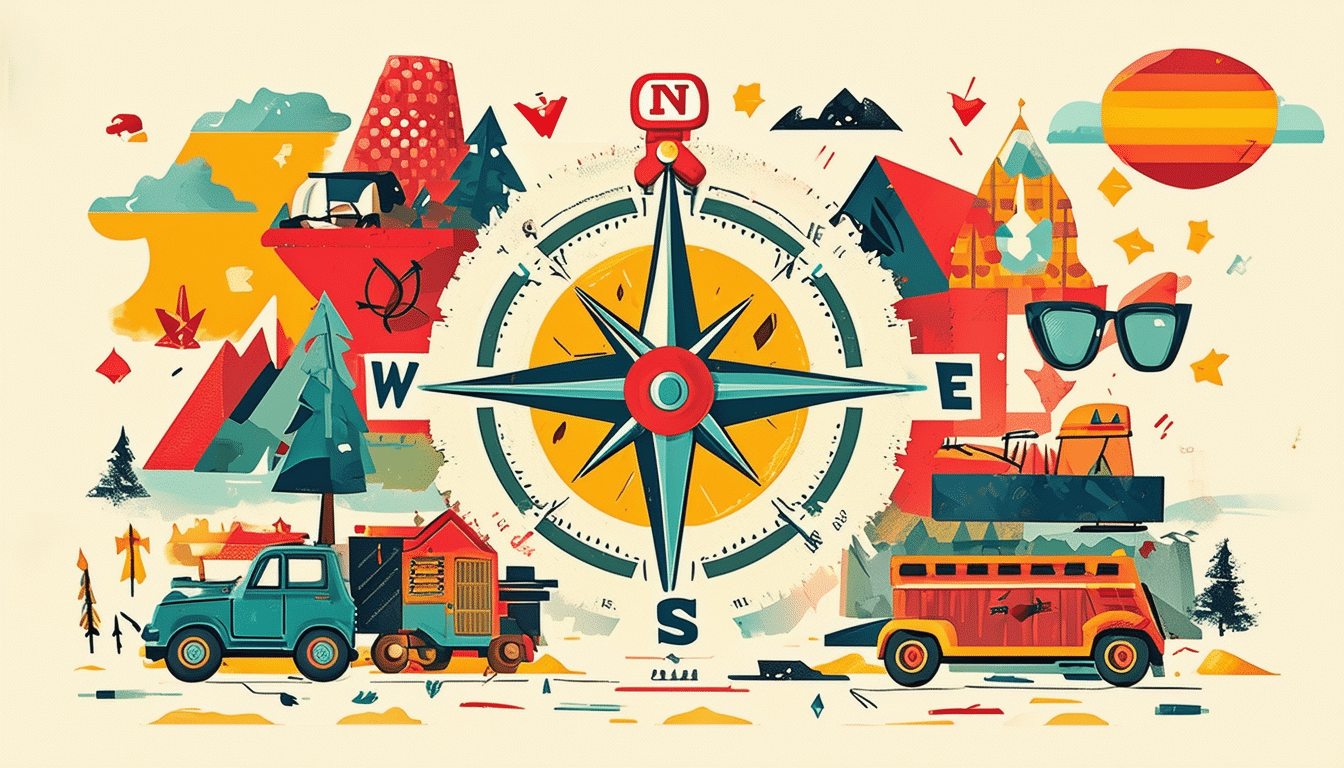|
IN SHORT
|
There are three basic guidance skills in life that can make all the difference in pursuing our goals. These skills, often neglected but nevertheless essential, can be learned and developed by everyone. Let’s discover together the importance of these skills for our personal and professional development.
In an era where GPS technology is omnipresent, knowing how to use a compass remains a valuable skill. Whether it’s a battery failure or a lack of satellite signal, your ability to determine your position and direction by a compass is as essential as ever. Mastering these wayfinding techniques, even if you never use them, will put you in closer contact with nature. Here are the three basic wayfinding skills you should learn.
Adjust declination
When using a compass, there are two types of north to consider: true north and the magnetic north. True north is defined by the point where the Earth’s axis emerges from its surface, while magnetic north is defined by the Earth’s magnetic field. The compass needle always points toward magnetic north, and the angle between true north and magnetic north is called declination.
This angle changes depending on your position on Earth. The variation for a given location is generally printed on the corresponding topographical maps. It is crucial to set this angle on your compass for accurate calculations. Consult your compass’s instruction manual to find out how to adjust the declination, as each model has its own specificities.
From the map to the field
Imagine you know where you are on a map (for example, a trail intersection) and you want to find a specific destination on the ground, such as a water source. Identify this feature on the map and place your compass on it, its edge forming a line between your known position and your destination.
Turn the dial (or ring) until the parallel lines on the compass line up with the north-south lines on the map. Ignore the needle for now; you just adjust the orientation. Then hold the compass away from your body to avoid metal interference. Rotate until the magnetic needle lines up with the red orientation arrow. The travel direction arrow now points directly to your destination. Follow this arrow, taking repeated cues.
From the field to the map
To find your current location on a map, first identify a visually identifiable landmark in the landscape, such as a peak, river bend, or radio tower, and locate that landmark on the map.
Hold the compass flat with the direction of the arrow pointing precisely toward the mark. Turn the ring until the magnetic needle and the red orientation arrow are aligned. Place the compass on the map with the edge of the base intersecting the marker and the direction arrow pointing in the same direction.
By rotating the compass until the parallel lines line up with the north-south lines on the map, you will be able to draw a line. You are somewhere along this line. Take another mark and draw a new line; the intersection of these lines indicates your position. A third marker refines your location by triangulation.








